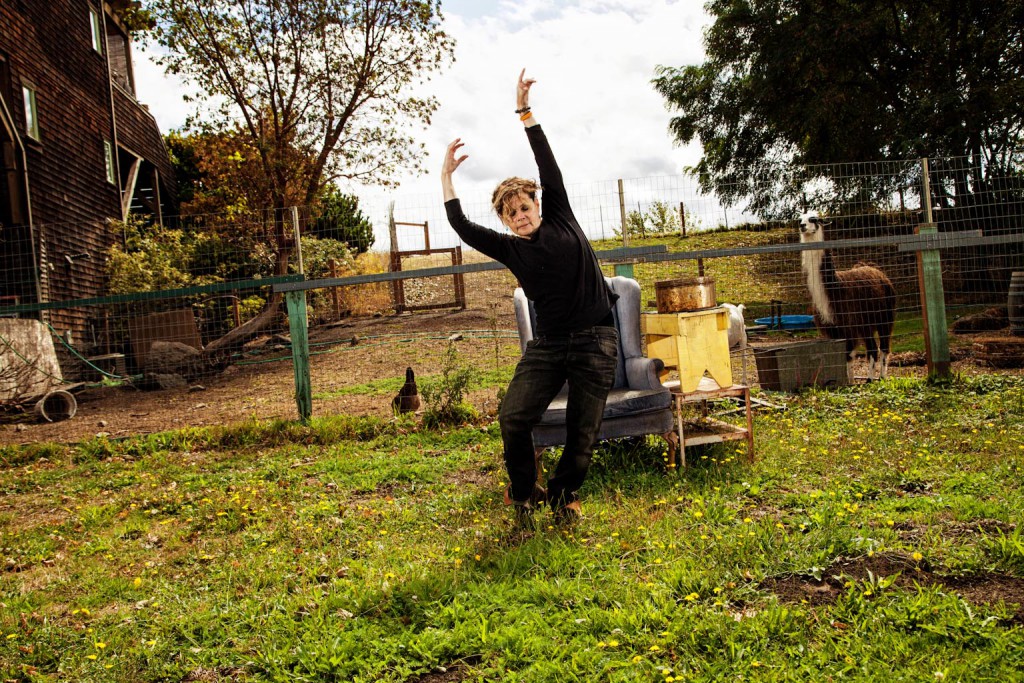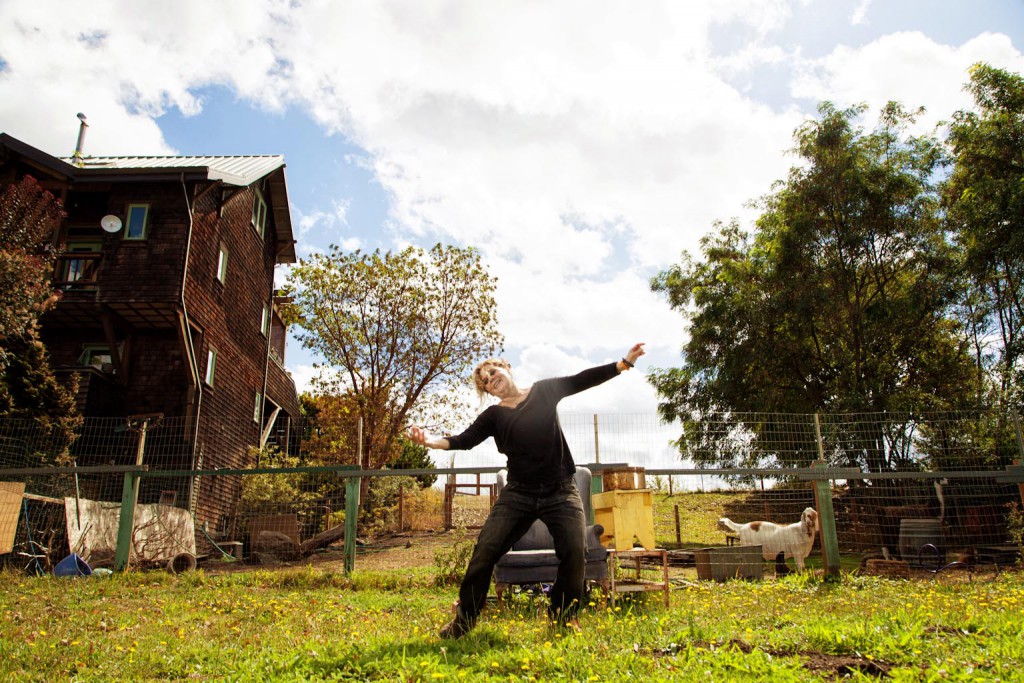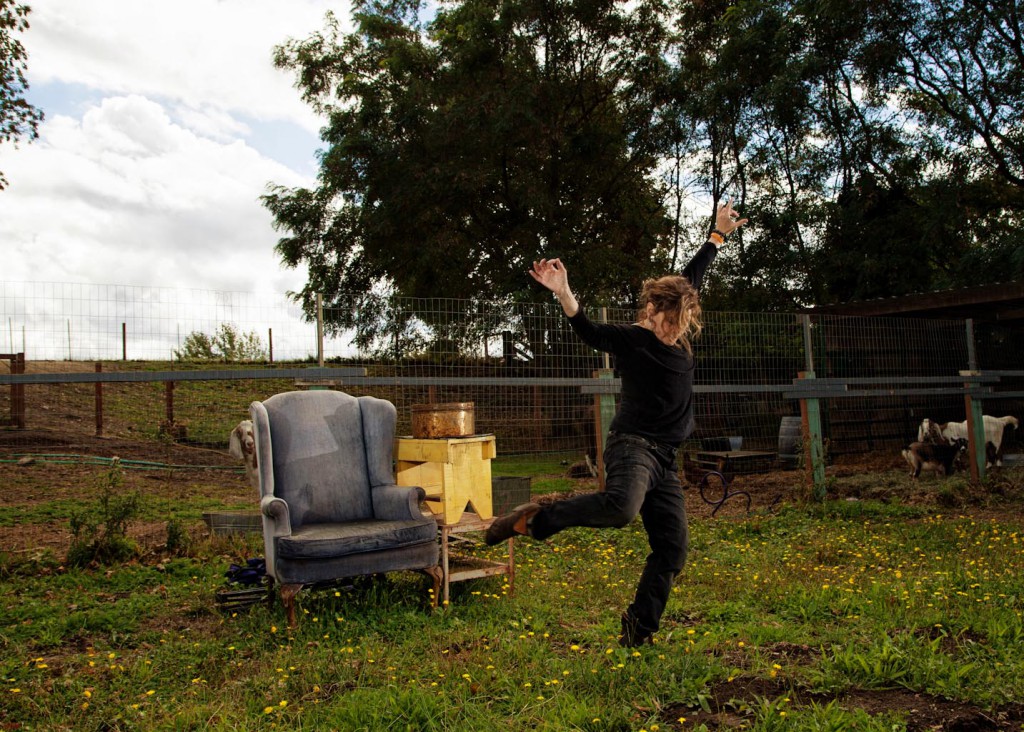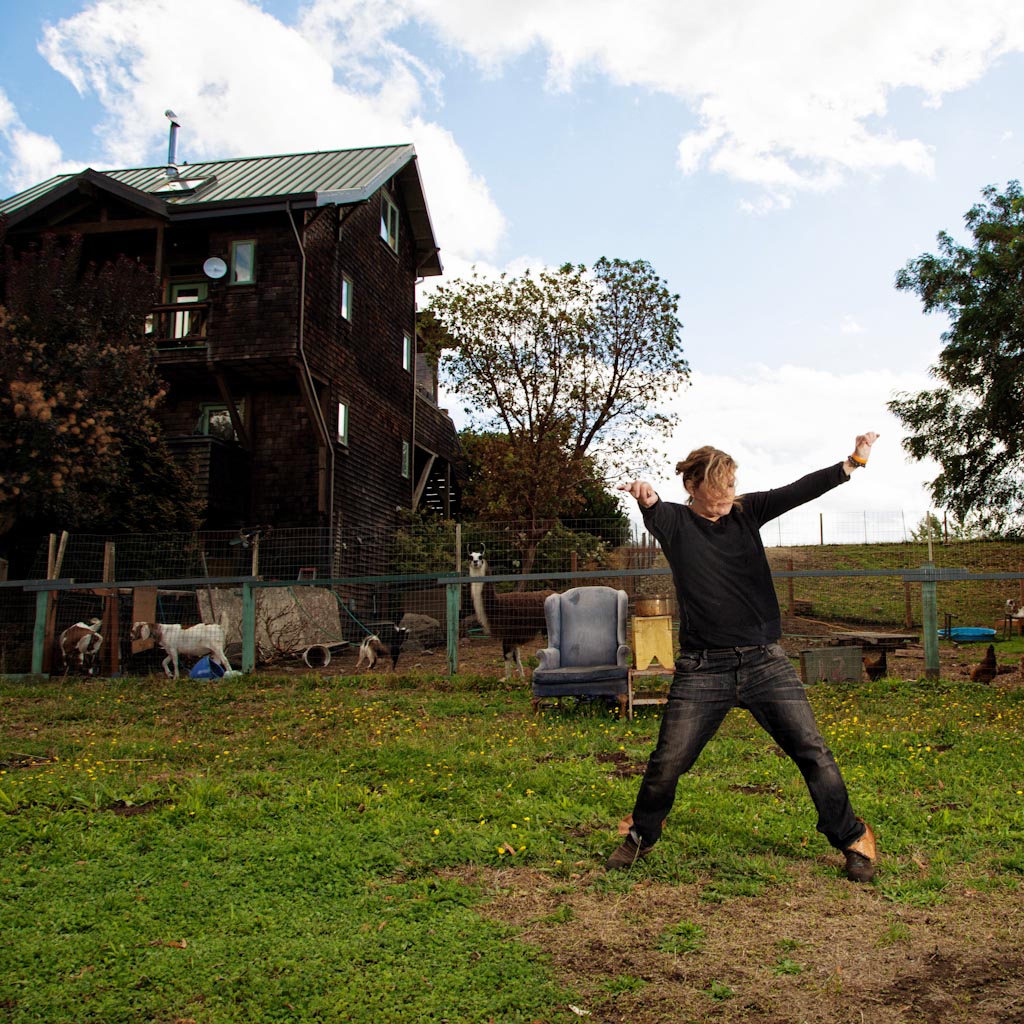Just Put It into Movement: An Interview with Tracey Durbin
BY EMMALY WIEDERHOLT; PHOTOGRAPHS BY GREGORY BARTNING
Out on Sauvie’s Island is a llama who loves Tracey Durbin. The llama loves her because Tracey takes care of him, but also because of who Tracey is – a whirlwind confluence of dancer, choreographer, teacher animal caretaker, interior decorator and outdoor enthusiast. Her dance is her life; it’s as much her time in the studio as it is her time taking care of her animals.
This interview is from the book “Beauty is Experience: Dancing 50 and Beyond.” Click here to learn more about the book, or click here to order your own limited edition copy!
~~
When did you start dancing and what have been some highlights along the journey?
I was a child performer. Starting at age four I was on television doing telethons with Danny Thomas and Paul Anka. I was a little wind-up dancer-singer-piano-player doll. I went to Hollywood Professional School and had a whole career doing industrials, videos and performances. Luigi was my mentor. Hama was Luigi’s number one son, and he transferred to him his philosophy and style of movement, which is what I’m trained in.
I always tried to move away from dancing. I lived on a kibbutz in Israel for two years, thinking I was leaving Los Angeles and trying a different life, but I ended up teaching dance there. Then I studied animal and medical technology, went to work in an animal hospital, took a dance class and found myself teaching dance again. That was in Eugene.
I lived in Eugene for a long time. I went back and forth between there and Los Angeles for many years before moving up to the Portland area.
What does you current dance practice look like?
I teach and choreograph. I teach about five to six classes a week at Northwest Dance Project and BodyVox. I teach jazz. I also choreograph – I just finished a piece for Northwest Dance Project.
I go to the gym every day. I was in a pretty catastrophic taxi accident 10 years ago. I broke my back, pelvis and had a lot of surgeries, as well as suffered a head injury. It was kind of similar to Luigi’s story. I always heard him talking about recovery, and years later there I was in a wheelchair. I was out of it for a long time. Going to the gym every day is the best way I’ve found to keep myself mobile.
I also care for animals. Since I was a little kid, I’ve loved three things: dance, animals and clothes. I ran a clothing store for 18 years, and I’ve done interior décor around Portland. It all feels like choreography to me in a way – taking intuition and texture, blending and editing. My interests interconnect.
How has your motivation to dance changed over time?
I’ve always been obsessed with movement. I love leaves in the wind or how a llama walks. I take my lead from what’s around me and how it moves. In general, I’m not very good at being static. I love making other people move too.
We live in an ageist society, so as you age you become invisible. Maybe one of the ways to be visible is… I really hold on to the past in class. It’s a way to honor and remember what was, and a way for kids to have that base. The world has gotten really complicated, and there’s such urgency. There’s not as much mindfulness, which Luigi taught me. Just start with your hand on your heart, for example. I still keep his philosophy in my practice.
What does the idea of success mean to you? Do you feel you’ve achieved some measure of success?
I’m really simple. I feel like breathing is a success. I’ve never even thought of myself in terms of success, and hope I never do. I never had huge goals. I just let things unfold.
What do you perceive is your legacy?
Ever since my accident, and especially more recently, life has become about loss in a way. Everything I do surrounding movement and choreography is trying to give back something I’ve been given through the years.
Will there ever be a time when you’re done dancing?
Every day. I’m in a lot of pain all of the time. It’s almost a joke with my students: this is it, no… this is it. I can barely move anymore. Because the accident happened when I was still relatively young, I had to remove myself from being a “dancer” way before I thought I would, and it helped me go through this transition of aging better. I don’t have to prove myself in any way, shape or form.
What advice would you give to a younger generation of dancers?
My class is kind of a melting pot, from professionals and ex-professionals to younger kids, but everyone kind of helps each other. In that sense, my advice is to find what’s special to you. What do you have to offer? Use dance to become more self-aware.
Kids have so much urgency now about getting into companies or whatnot. I say, “My class is just for us to sweat all together and make sense of our world.” That’s my advice over and over again. When kids come ask me what they need to do in order to get better, I tell them: just put it into your movement. Stop judging.
Any other thoughts?
It’s difficult for older dancers to hold on. As much as I have respect for young dancers who are slaves for this art, I have so much respect for the older generation of movers who love what they do, who continue to move and who are so much more youthful than others their age. They have so much to offer. You have to be incredibly brave to dance through the years. It’s such a unique field. But we’re still here. That’s our refrain.
~~
Tracey Durbin started dancing professionally at the age of four. After studying years of piano, theater and ballet at Interlochen Arts Academy in Michigan, Tracey moved to Los Angeles where she studied ballet with Stanley Holden, jazz with Luigi (the innovator of the world’s first jazz technique), and assisted Hama, Luigi’s protégé. Her choreography has been in the LA Jazz Festival, music videos and industrials. Tracey was an original member of Dancers’ Workshop, started Irvington Dance Company, and has taught for many years at Oregon Ballet Theatre, Reed College, Portland Ballet, Northwest Dance Project and BodyVox.
This interview is from the book “Beauty is Experience: Dancing 50 and Beyond.” Click here to learn more about the book, or click here to order your own limited edition copy!




